Step-by-Step Guide to Grilling Frozen Tuna with a Flavorful Marinade
Grilling tuna brings out the rich, meaty flavor of this delicious fish, and using previously frozen tuna makes the process both convenient and safe without sacrificing taste or texture.
In this recipe, I’ll guide you through transforming frozen tuna steaks into a juicy, flavorful grilled meal with a simple yet powerful marinade. Many people freeze tuna before cooking to reduce the risk of parasites and extend shelf life, so don’t hesitate to use frozen tuna if fresh isn’t available or if you want to prepare ahead.
To get the best results with previously frozen tuna, marinate the fish well to lock in moisture and add vibrant flavors. My marinade combines savory, tangy, and aromatic ingredients, infusing the tuna with herbs, citrus, and a hint of spice.
When you grill the tuna over high heat, you’ll develop a beautiful sear while keeping the inside tender and moist. Whether you like your tuna rare, medium, or fully cooked, this recipe gives you the tools to achieve perfect results every time.
This healthy, protein-packed dish works great for summer barbecues or quick weeknight dinners. Let’s jump in and start marinating and grilling your tuna steaks to create a restaurant-quality meal at home!
Grilled Marinated “Previously Frozen” Tuna
Ingredients
For the Marinade
- 2 tablespoons balsamic vinegar
- ⅔ cup fresh orange juice
- zest orange
- 2 tablespoons soy sauce
- 2 tablespoons fresh ginger minced
- 1 teaspoon dry mustard
- 1 teaspoon sea salt
- 1 teaspoon black pepper freshly cracked
- ¼ cup olive oil extra virgin
For the Tuna
- 24 oz tuna steaks (4 steaks) defrosted (see below) or fresh
Instructions
- Defrost the tuna steaks as described below. You can also use fresh tuna steaks too.
For the Marinade
- Combine the orange zest and juice, balsamic vinegar, soy sauce, ginger, dry mustard, salt, and pepper in a blender or food processor. Pulse until the mixture is smooth and well-blended.
- With the motor running, slowly drizzle in the olive oil. This step emulsifies the oil into the marinade, helping everything stay combined. If you add the oil too quickly, the marinade may separate.
- Marinate the steaks. I only marinated the tuna for 30 minutes, and it turned out great. Just imagine how much more flavorful it would be with a full 3-hour marinade!
Grill the Tuna
- Grill the tuna steaks on your favorite grill to your preferred level of doneness. Since I used previously frozen tuna, I cooked the steaks all the way through so my kids would enjoy them.
Buying and Grilling “Previously Frozen” Tuna
Buying and cooking frozen tuna is perfectly safe and often a smart choice for several reasons. First, freezing tuna helps preserve its freshness and quality by slowing down the natural deterioration process.
When handled properly, freezing locks in the fish’s flavor and texture, allowing you to enjoy excellent-tasting tuna even if it’s not caught locally or recently.
Additionally, freezing tuna reduces the risk of parasites, which can sometimes be present in raw fish. Many health and food safety agencies recommend freezing fish intended to be eaten raw or lightly cooked as a precaution. This means that frozen tuna often meets stricter safety standards than fresh fish sold at the market.
Frozen tuna also offers greater convenience and availability. You can buy it in advance and store it in your freezer, reducing food waste and enabling you to prepare meals on your schedule without rushing to use fresh fish before it spoils.
When you thaw frozen tuna properly and cook it using reliable methods—like marinating and grilling as in this recipe—you’ll get a delicious, safe, and nutritious meal. So don’t hesitate to choose frozen tuna; it’s a practical, safe, and tasty option for your cooking.
Step-by-Step Guide to Thawing Frozen Tuna
| Thawing Method | Step-by-Step Instructions | Time Required | Tips for Best Results |
|---|---|---|---|
| Refrigerator Thawing |
1. Place frozen tuna in a sealed plastic bag or airtight container. 2. Put it on a plate or tray to catch any drips. 3. Leave in the fridge at 35–40°F (2–4°C) until completely thawed. |
12 to 24 hours |
Slow, even thawing preserves texture and flavor. Keep tuna covered to avoid contamination or odors. Best for maintaining firm, fresh taste and safe handling. |
| Cold Water Thawing |
1. Keep tuna sealed in airtight plastic bag to prevent water exposure. 2. Submerge bagged tuna in a bowl of cold water. 3. Change water every 20–30 minutes to keep it cold. 4. Remove tuna once thawed and cook immediately. |
30 minutes to 1 hour |
Faster thawing but requires monitoring. Avoid warm water to prevent bacterial growth. |
| Microwave Thawing |
1. Use microwave’s defrost setting, place tuna on microwave-safe plate. 2. Check frequently and turn tuna to prevent partial cooking. |
2 to 5 minutes |
Only use if you’re in a hurry, but risks uneven thawing. Cook tuna immediately after thawing to avoid bacteria. |
| Do Not Thaw at Room Temperature | Avoid leaving tuna out on the counter to thaw. | N/A | Risk of bacterial growth and loss of quality. |
Alternative Marinade Suggestions
| Marinade Flavor Profile | Key Ingredients | Marinating Time | Notes |
|---|---|---|---|
| Citrus Herb | Lemon juice, olive oil, garlic, thyme, parsley | 30 minutes to 1 hour | Bright and fresh; don’t marinate too long or fish may cure |
| Asian Inspired | Soy sauce, ginger, garlic, sesame oil, honey | 20 to 45 minutes | Sweet and savory; shorter time to avoid overpowering |
| Spicy Cajun | Olive oil, smoked paprika, cayenne, garlic, lemon | 30 minutes to 1 hour | Adds heat and smoky flavor; balance with acidity |
| Mediterranean | Olive oil, balsamic vinegar, oregano, garlic, basil | 30 minutes to 1 hour | Earthy and tangy; ideal for grilling |
| Simple Garlic & Herb | Olive oil, minced garlic, rosemary, black pepper | 30 minutes to 1 hour | Classic flavors that enhance tuna’s natural taste |
| Tropical | Lime juice, coconut milk, cilantro, chili flakes | 20 to 40 minutes | Creamy and zesty with a hint of spice; don’t over-marinate |
| Teriyaki Style | Teriyaki sauce, ginger, garlic, brown sugar | 20 to 40 minutes | Sweet and umami-rich; use short marinating time |
| Mustard & Herb | Dijon mustard, olive oil, lemon juice, thyme | 30 minutes to 1 hour | Tangy and sharp with herbal notes |

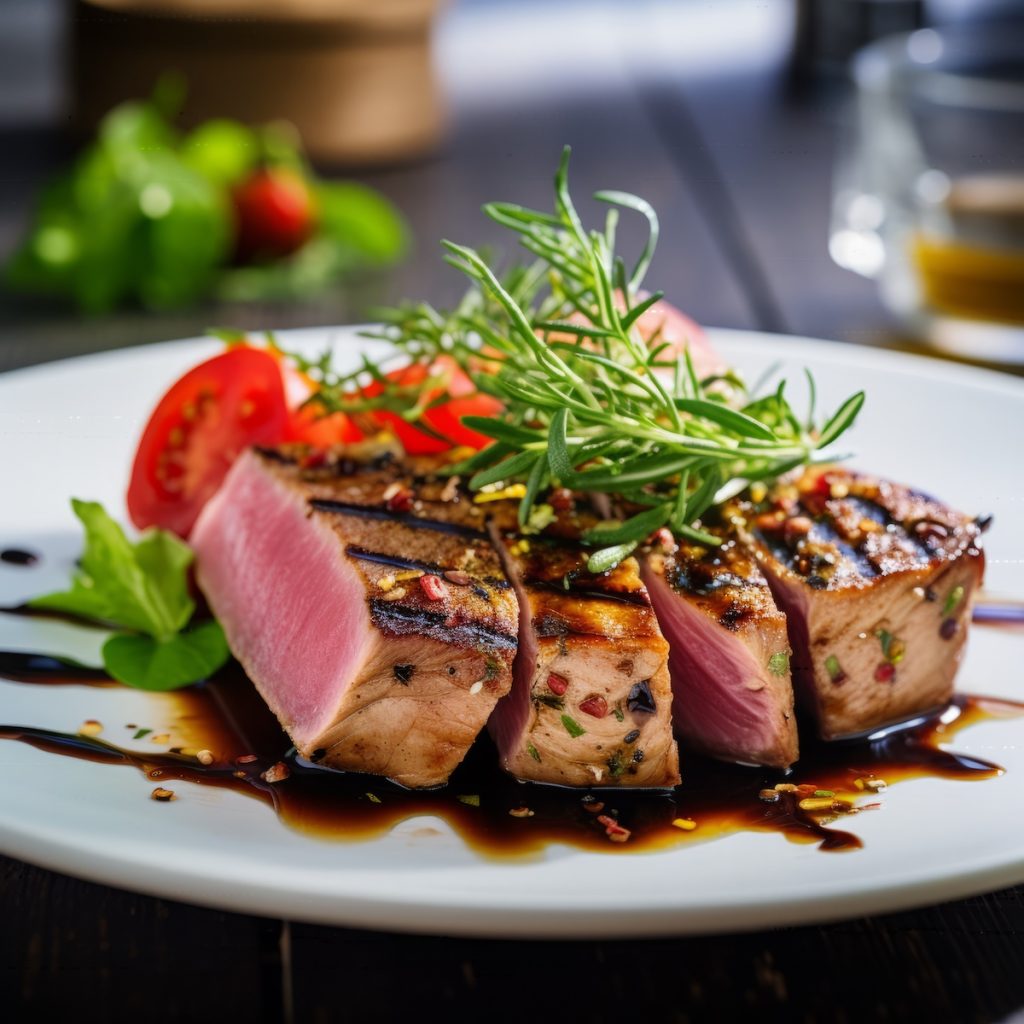


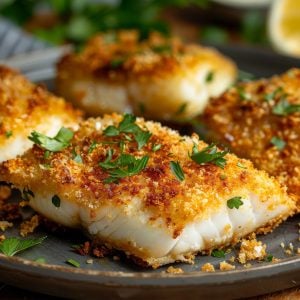


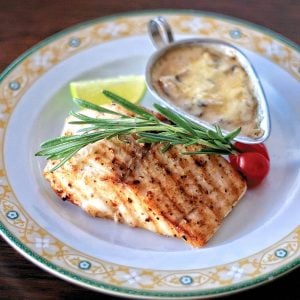
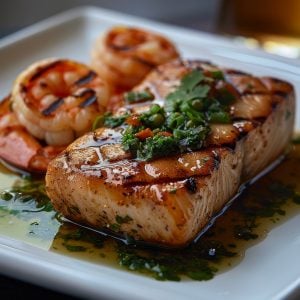
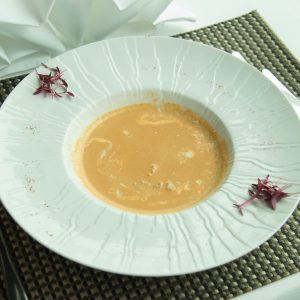




15 Responses
Thanks for the post.
Great info.
Excellent!
haven’t seen the site for a while, boy does it look great! I just grabbed a recipe for tonight’s tuna steaks. hope you are all fantastic!
Good little recipe . . . Think I will give it a try
Excellent site, keep up the good work
Great post, thanks!!
My new favorite site. Keep up the good work!!!
Thank you Sara, you are too kind. – RG
Was just looking for Tuna recipe. Loved what I found. Very impressed. Ill be back.
Thanks and look forward to seeing you. – RG
Actually, most tuna is previously frozen, not only including, but especially, that A grade sushi tuna. This is to get rid of parasites. The U.S. Food and Drug Administration requires that fish meant to be eaten raw be frozen at a temperature of -4 degrees Fahrenheit or below for at least 168 hours, or one week.
In Japan the tuna is gutted, bled and quickly frozen whole on the boat, and that is how they go to market. Buyers judge quality by taking a core sample from the frozen fish.
Hi Paul, I don’t think that rule applies to tuna. I just found an interesting NY Times article that says, “Food and Drug Administration regulations stipulate that fish to be eaten raw — whether as sushi, sashimi, seviche, or tartare — must be frozen first, to kill parasites. ”I would desperately hope that all the sushi we eat is frozen,” said George Hoskin, a director of the agency’s Office of Seafood. Tuna, a deep-sea fish with exceptionally clean flesh, is the only exception to the rule.” The article also goes on to say many restaurants and stores buy it frozen “because global consumption of sushi continues to rise. Frozen fish usually costs about half as much wholesale as fresh. And some cuts, like the prized fatty toro, are not always available fresh.” I have enjoyed tuna just caught off the coast of Long Island, NY and you could really taste the difference.
I like what you said about putting ginger on your fish. I need to get some kind of fish that my wife will like. I’ll have to consider getting albacore for her to try.
Dear the Reluctant Gourmet :-)) So much helpful your article is. Today, while i had only less than hour to think about how to marinate and cook the frozen tuna…I found your article.I tried to follow and ohh, amazing result.I stay in Asia, about day flight far from your place, but understand and feel the passion and joyfulness you put in every recipe you have written. Hope all your followers can feel those too.Will look into your other recipesI am planning to visit your country soon. Let say, if I am going to NY, which restaurant for fish (not Sashimi but Grill or Fry) can you recommend?Thankssss so much for the article and commend (if any)
Akako, thanks for the kind words. I don’t live in NYC anymore but will ask my daughter who is living there now.
I’m confused, the recipe says this is a marinated tuna recipe but there’s no step to marinate the tuna. Are you supposed to marinate the tuna before grilling for at least half an hour or do you cook the tuna and then marinade the tuna and then eat it cold?
Hi Eilidh, I can see why you are confused. Yes, you are supposed to defrost the steaks first, then marinate them, then grill. I changed the recipe to accommodate this. Thanks for pointing it out.